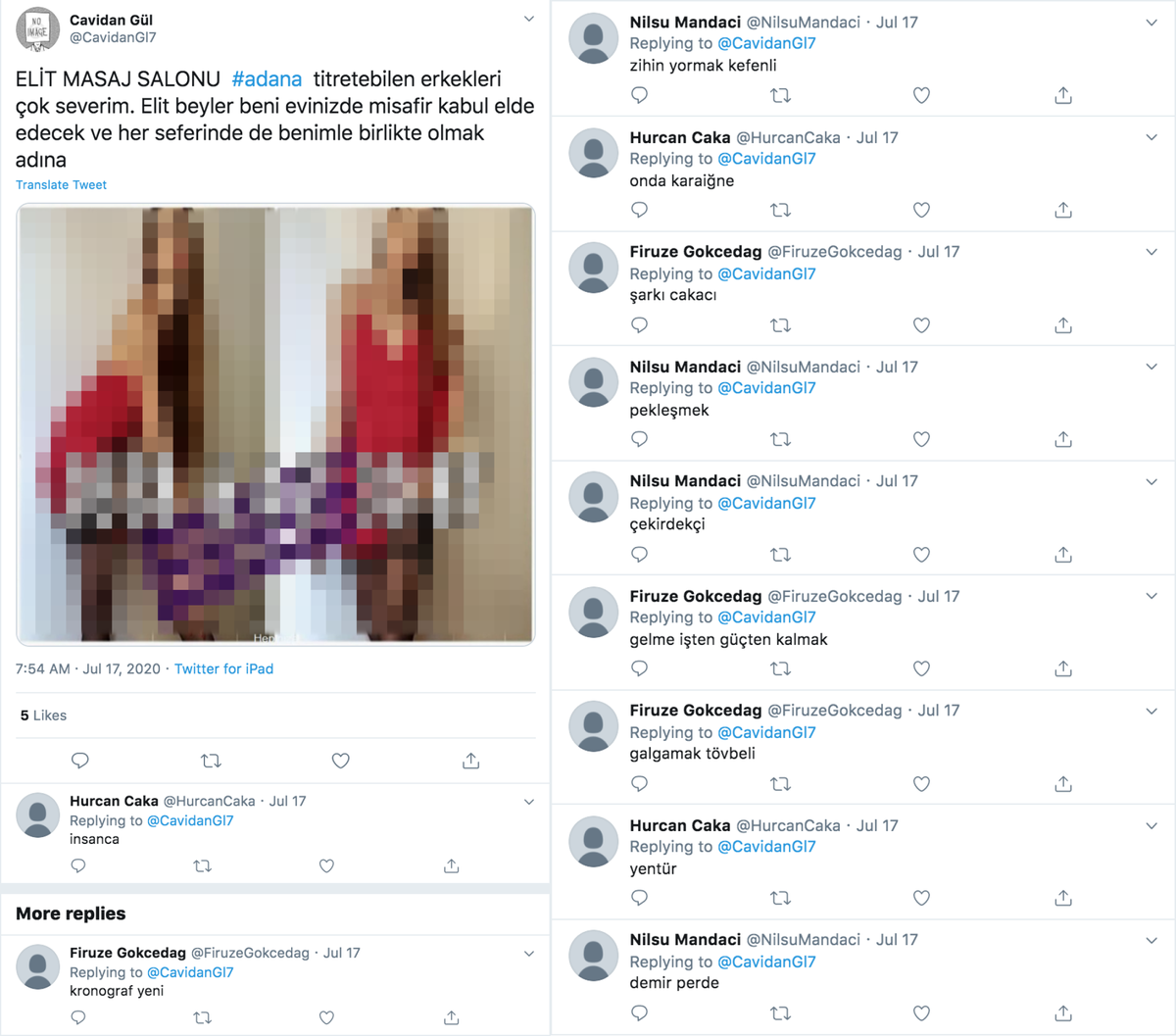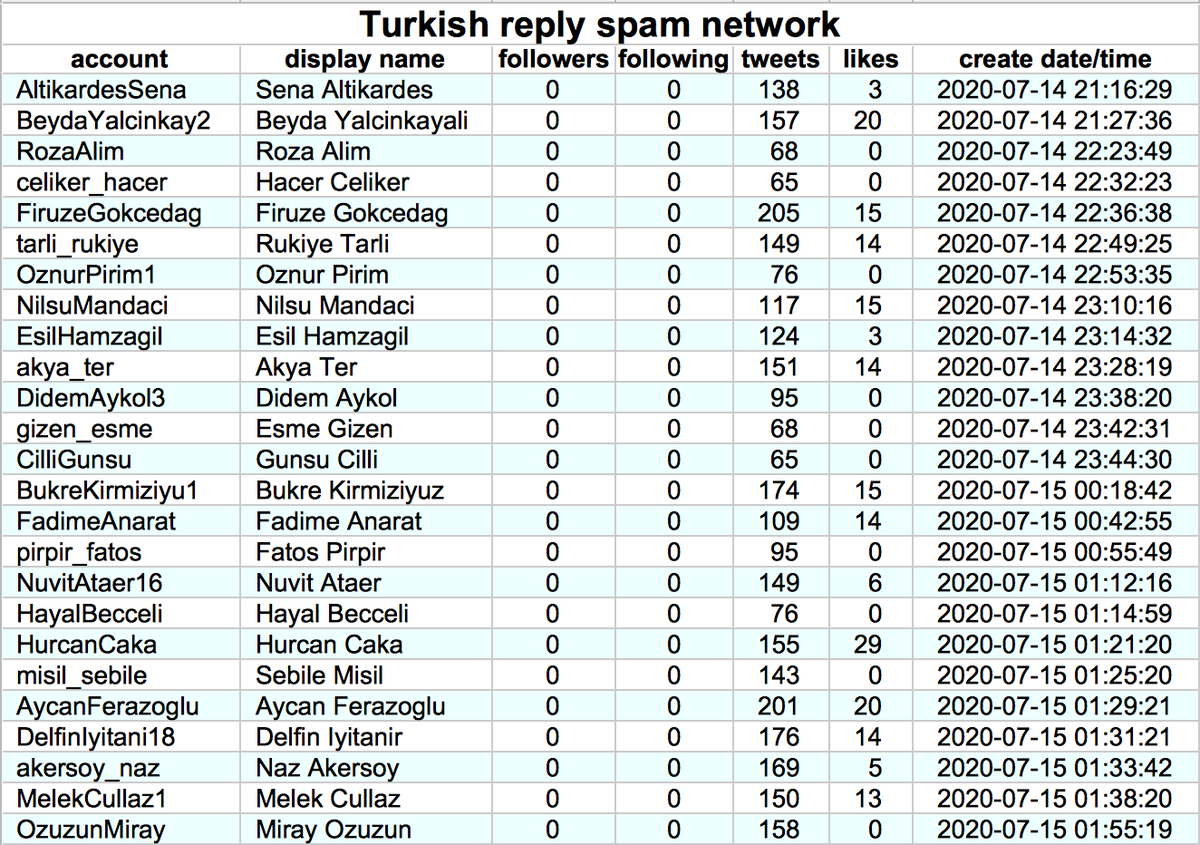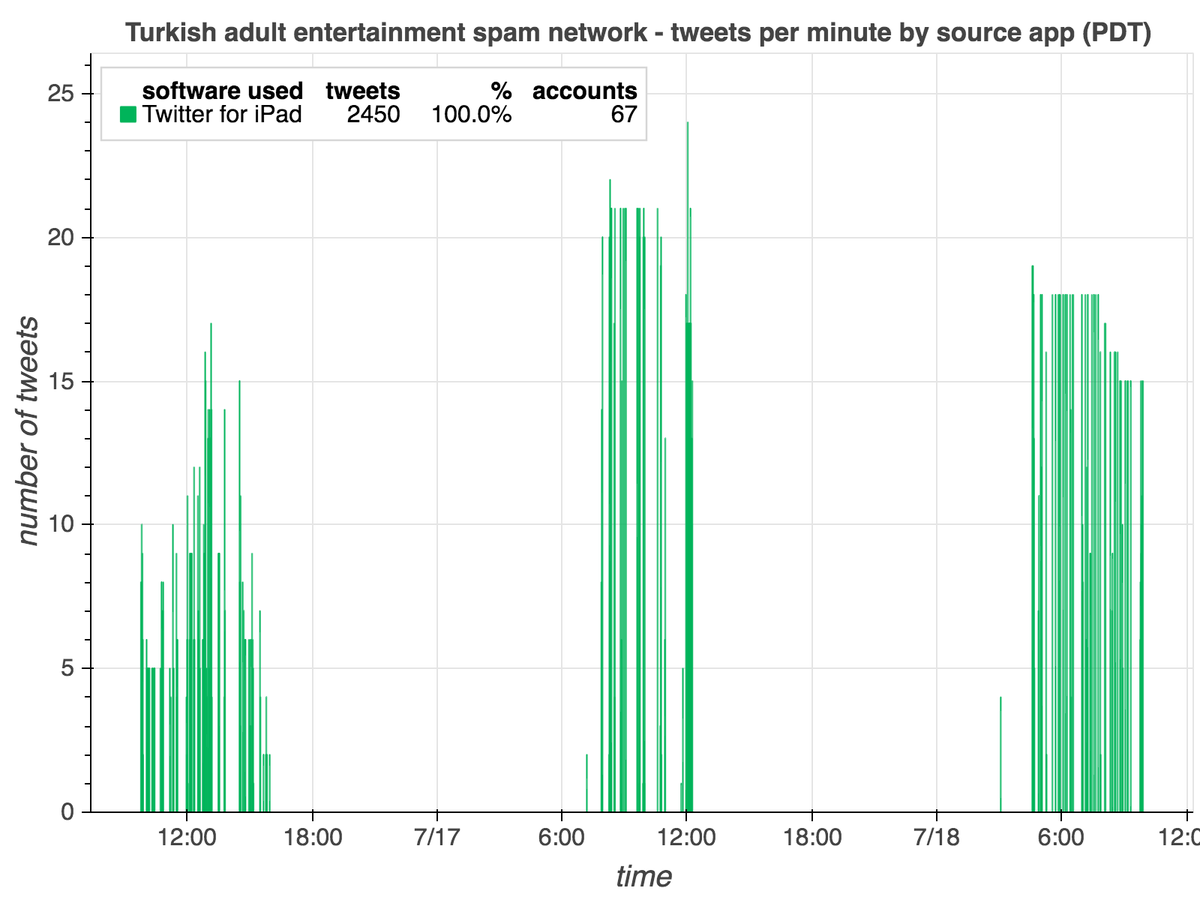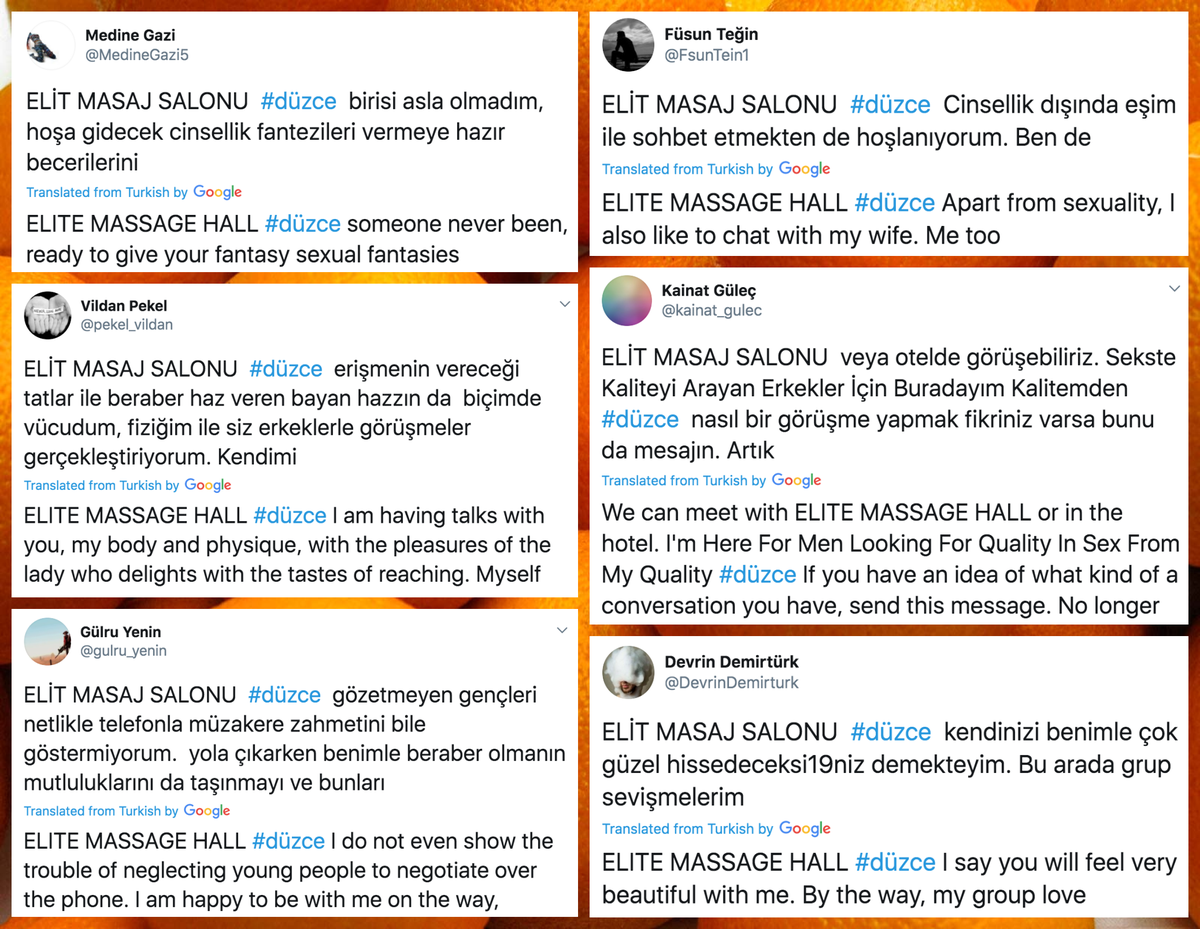A gaggle of newly-made Turkish accounts with default profile pics are replying to Turkish tweets advertising adult services. What's up with that? #SaturdaySpam
cc: @ZellaQuixote
cc: @ZellaQuixote

We found 25 accounts that appear to be part of the reply spam network. All were created on July 14th/15th 2020, have default profile pics, follow no accounts, and have no followers of their own. As always, take Google Translate's translations with a grain of salt. 







These 25 accounts theoretically tweet via the Twitter Web Client, but we suspect they are automated for two reasons:
• rapid tweeting (80-100 tweets per minute)
• "Twitter Web Client" is the source app name for the old Twitter website, which is no longer available to users
• rapid tweeting (80-100 tweets per minute)
• "Twitter Web Client" is the source app name for the old Twitter website, which is no longer available to users

What about the accounts these 25 accounts reply to? As it turns out, all 67 of the accounts they reply to were created on the same day (May 10th 2020), have never liked a tweet, follow either 0 or 16 accounts, and allegedly tweet via the iPad app. 





As with the first group of accounts, we suspect these 67 accounts are automated despite tweeting via a hypothetically organic source (Twitter for iPad). The volume is lower (15-20 tweets per minute), but the tweets are substantially longer and most include media. 



• • •
Missing some Tweet in this thread? You can try to
force a refresh





























